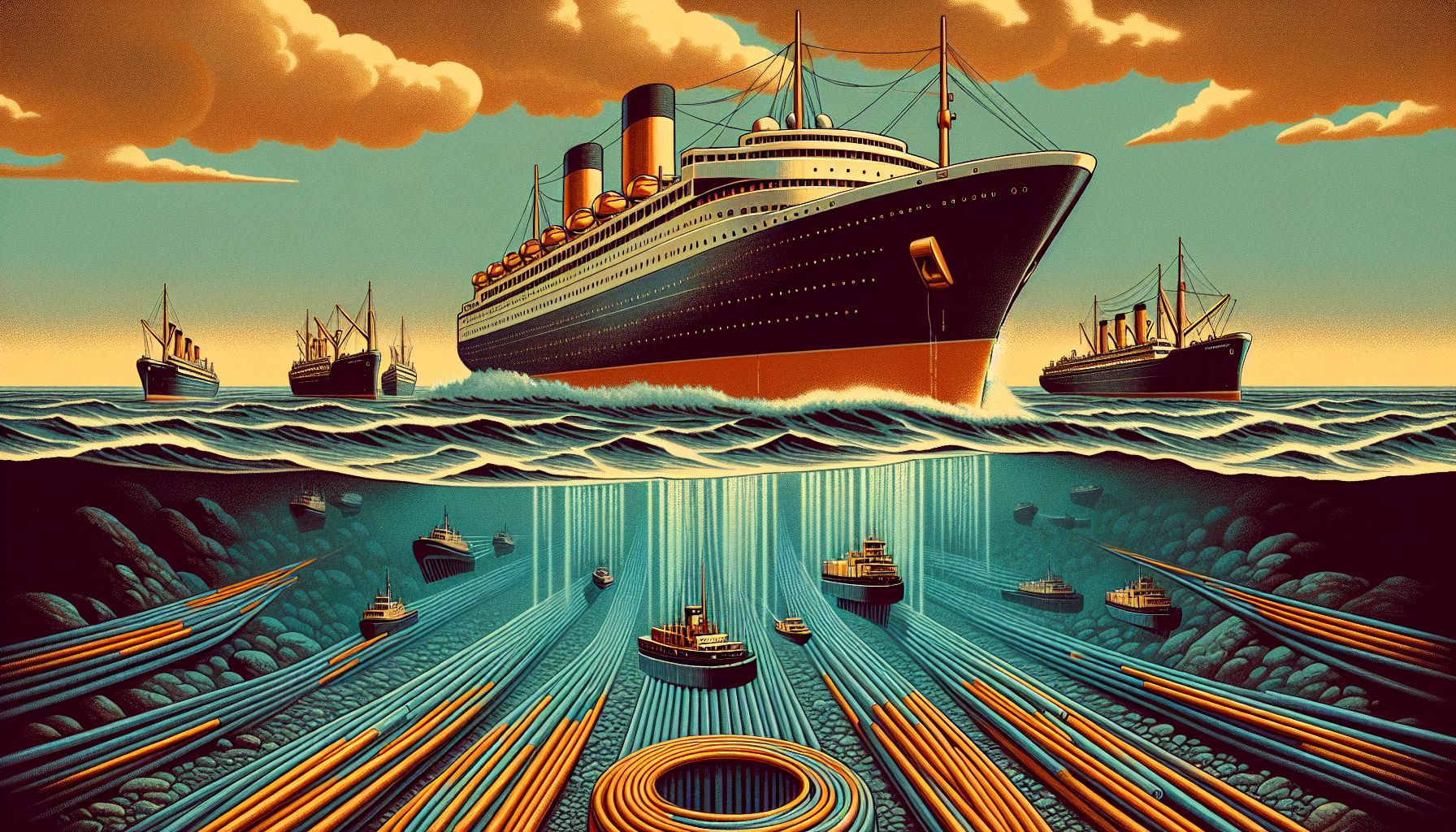TNO Develops Detection System to Protect Subsea Cables and Pipelines

TNO’s new method uses dark fibers in fiber-optic cables to detect maritime traffic near underwater infrastructure, enhancing safety and preventing damage in the North Sea.
The Innovation and Its Context
The newly developed detection system by TNO (Netherlands Organization for Applied Scientific Research) focuses on utilizing dark fibers within existing fiber-optic cables. These dark fibers, typically unused strands in the cables, are repurposed to act as sensors that can detect vibrations caused by maritime traffic. This innovation is crucial, considering the increasing threat to underwater infrastructure such as submarine cables and pipelines, which are vital for global communication and energy transport.
How It Works
The system operates by attaching a Distributed Acoustic Sensing (DAS) interrogator device to the ends of the fiber-optic cables on land. This device sends laser light through the dark fibers, which can pick up and transmit vibrations caused by various sources, including ships, earthquakes, and environmental noise. The vibrations detected by the fibers are then processed using advanced algorithms to distinguish between different types of movements and identify the presence of maritime traffic.
Successful Tests and Applications
TNO’s detection system has been successfully tested in the North Sea using a power cable from a wind farm and a telecommunication cable. These tests demonstrated the system’s ability to monitor large areas around the cables, effectively detecting and tracking ship movements. According to Vincent Vandeweijer, a geologist and geophysicist at the Geological Survey of the Netherlands, the tests confirmed that dark fibers could accurately map ship movements around underwater infrastructure, enhancing safety in the North Sea.
Benefits of the Innovation
One of the primary benefits of this detection system is its ability to provide early warnings of potential threats, such as unauthorized or suspicious maritime traffic near critical underwater infrastructure. By automatically sending alerts to infrastructure owners and relevant authorities, the system helps prevent damage caused by ship anchors, fishing activities, or even sabotage. This proactive approach is especially important in light of recent incidents, such as the Nordstream pipeline attack, which highlighted the vulnerability of subsea infrastructure.
Future Prospects and Deployment
While the full deployment of TNO’s detection system is expected within the next one to two years, its potential impact is already evident. The system can detect ships up to two kilometers from a cable, making it a powerful tool for protecting extensive underwater networks. However, the constant monitoring of cables is costly, raising questions about financing and operational responsibilities. TNO has indicated that the monitoring will likely be carried out by infrastructure owners or specialized services.
Conclusion
In conclusion, TNO’s innovative use of dark fibers in fiber-optic cables represents a significant advancement in the protection of underwater infrastructure. By providing a reliable method for detecting and tracking maritime traffic, this system enhances the safety and security of submarine cables and pipelines, which are critical to global communications and energy supply. As TNO continues to refine and deploy this technology, the future of North Sea security looks increasingly promising.

